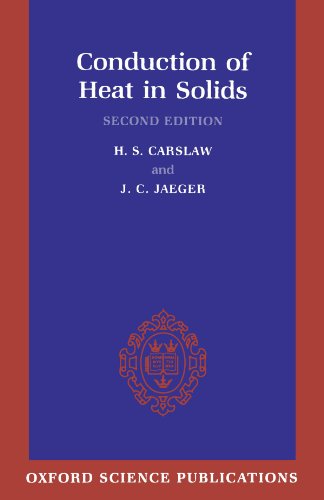Conduction of Heat in Solids ebook
Par duffy jamie le jeudi, septembre 8 2016, 00:46 - Lien permanent
Conduction of Heat in Solids. H. S. Carslaw, J. C. Jaeger

Conduction.of.Heat.in.Solids.pdf
ISBN: 0198533683,9780198533689 | 517 pages | 13 Mb

Conduction of Heat in Solids H. S. Carslaw, J. C. Jaeger
Publisher: Oxford University Press, USA
Well, in fact there are two mechanisms of heat conduction. I consulted for my work the book "heat conduction in solids" by H.S. In this process, heat is transferred from particles to particles of the solid, without the actual movement of the particles. Horatio Scott CarslawとJohn Conrad Jaegerによる共著 Conduction of Heat in Solids. I don´t think it´s a good idea to model it as a continous solid because of the gap between the sand grains. All solids (metals and non-metals) are made up of tiny particles called atoms, or groups of atoms called molecules. Currently I should simulate the heat conduction through the pulverised materials (like sand) in CFX. For conduction to work there needs to be physical contact between the two systems in question. Conduction is the one of three types of heat transfer in which thermal energy transfers from one point to another through the interaction between the atoms or molecules of the matter. However, there is one important difference between metals and non-metals: metals contain Now, here comes the question: if molecular vibration is common to both metals and non-metals, shouldn't we expect both of them to exhibit similar heat conductivity? Like for solids mode of transfer of heat is conduction. When the heat transfer involves solids then we call it conduction. Conduction Heat transfer always takes place by areas of high heat energy migrating to areas of. Conduction is a process of heat transfer in solids. The book says at the introduction: "When different parts of a body are at different temperatures heat flows from the hotter parts to the cooler. Because molecules are farther apart in gases than in solids, the gases are much poorer conductors of heat.